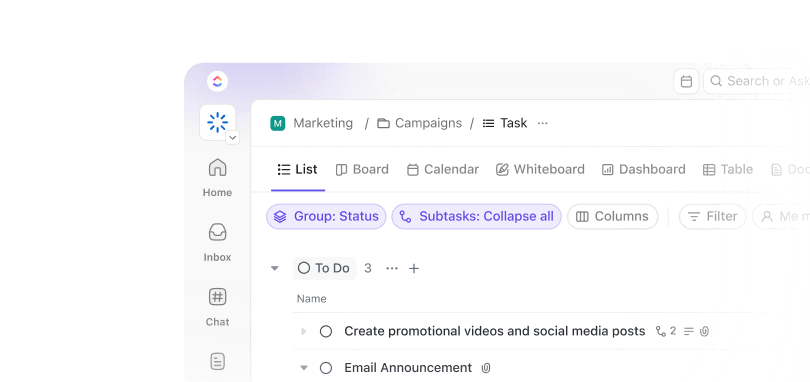You’ve seen the headlines. “No-code revolution!” “AI will replace developers!” “Build your app in seconds!”
It all sounds exciting—until you try to use AI in software development and end up knee-deep in a buggy mess of apps or worse, stuck rewriting everything by hand.
That’s probably how you found yourself comparing Lovable AI vs. Cursor to understand how to structure prompts better. One claims to turn your idea into a full-stack app with plain English. The other acts like a razor-sharp AI pair programmer that plugs into your existing workflow.
But here’s the catch: these AI-powered coding tools aren’t for the same kind of creator. So which one fits your workflow, your brain, and your pace?
Let’s break it down—real advanced features, real pricing, and zero hype.
How we review software at ClickUp
Our editorial team follows a transparent, research-backed, and vendor-neutral process, so you can trust that our recommendations are based on real product value.
Here’s a detailed rundown of how we review software at ClickUp.
- How we review software at ClickUp
- Lovable AI features
- Lovable AI pricing
- Cursor features
- Cursor pricing
- Feature #1: Natural language input
- Feature #2: Dev-focused code intelligence
- Feature #3: Collaboration
- Feature #4: Deployment readiness
- Feature #5: IDE integration
- Feature #6: Customization and code control
- Feature #7: Speed to prototype
- Feature #8: AI responsiveness
- ClickUp’s One Up #1: ClickUp Brain (AI that actually knows your work)
- ClickUp’s One Up #2: Automations (because manual updates are a waste of time)
- ClickUp’s One Up #3: Tasks + software project management (built for how dev teams work)
- ClickUp’s One Up #4: Collaboration tools that fill every gap in Lovable or Cursor
Lovable AI vs. Cursor: At a Glance
Here’s a quick breakdown of Cursor vs. Lovable:
| Feature | Lovable AI | Cursor | Bonus: ClickUp |
| Natural language input | ✔ Yes | ✔ Yes | ✔ Yes + AI-powered task creation, smart filtering, and automation for teams |
| Dev-focused code intelligence | ✘ No | ✔ Yes | ✔ Yes + task dependencies, workload management, and automated reminders for projects |
| Collaboration | ✔ Yes | Limited (some via Cursor Agents) | ✔ Yes + real-time collaboration, document sharing, and team commenting capabilities |
| Deployment readiness | ✔ Yes | ✘ No | ✔ Yes + project management tools like Gantt charts and software development templates for accelerated delivery timelines |
| IDE integration | ✘ No | ✔ Yes | ✔ Yes + integration with developer tools like GitHub and JIRA for streamlined project workflows |
| Customization and code control | ✔ Yes | ✔ Yes | ✔ Yes + custom task views, templates, and DevOps automations tailored to your workflow |
| Speed to prototype | ✔ Yes | ✘ No | ✔ Yes + instant setup of task lists, timelines, and product roadmaps for rapid iteration |
| AI responsiveness | ✔ Yes | ✔ Yes | ✔ Yes; ClickUp Brain for AI-enhanced coding assistance; auto-generate tasks, project summaries, and recommendations |
What Is Lovable AI?
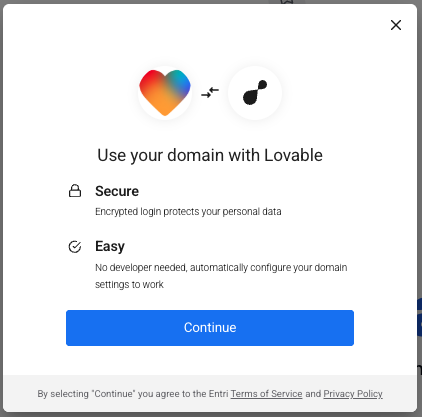
Lovable AI lets you build full-stack web apps just by describing your idea in plain English. That’s right—no code, no programming knowledge, no templates, and no wrestling with drag-and-drop tools pretending to be helpful. It’s AI for people who want to move fast without hiring an entire dev team.
🧠 Fun Fact: Developers leveraging AI complete 126% more projects per week than those who don’t.
Lovable AI features
Lovable AI isn’t one of those tools you try once for experimenting with new AI use cases and forget. It’s designed to deliver real, functional output—apps that aren’t just pretty prototypes but production-ready builds that can scale, integrate, and evolve with the following features:
Feature #1: Natural language to full app
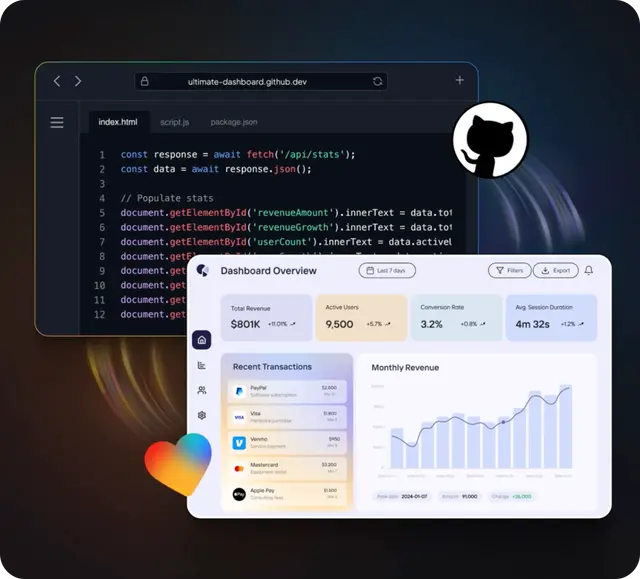
You don’t need to write a single line of code in this prototyping tool. Just describe your app using natural language prompts like—“I want a dashboard that shows sales by region and lets users upload invoices”—and Lovable will turn that into an actual working product. We’re talking full AI-generated code in minutes, from the front-end and back-end to the database architecture.
Feature #2: API ready from the start
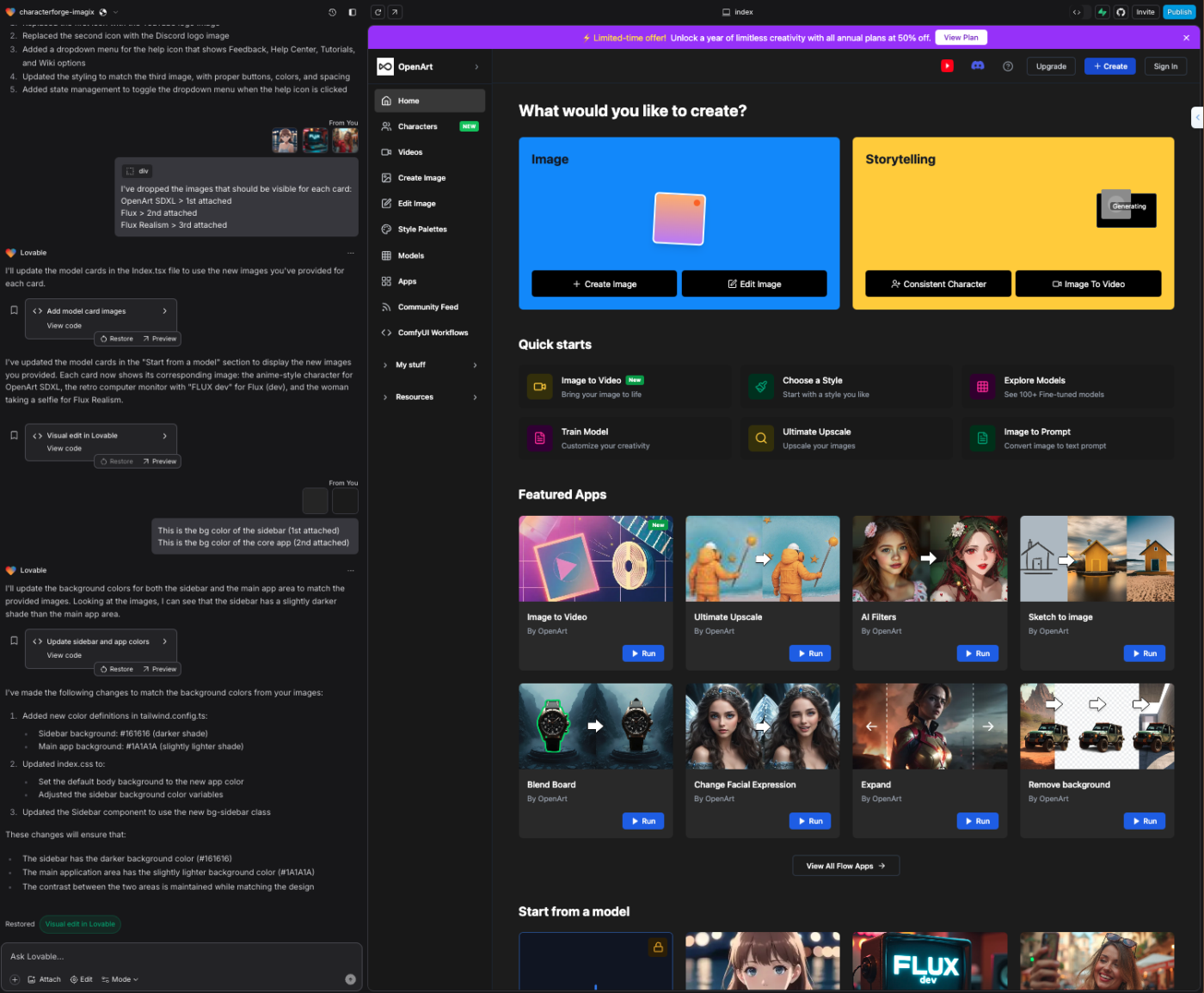
Lovable doesn’t wait for you to bring up integrations—it bakes them in from the start. Are you planning to use Stripe for payments? Do you want SendGrid for emails or OpenAI for content generation?
Just say the word, and Lovable will wire up the endpoints, set up API calls, and even handle user authentication flows. It’s like working with an AI-powered code editor that’s already read your mind—and your stack.
Feature #3: Full-stack editing (if you want it)
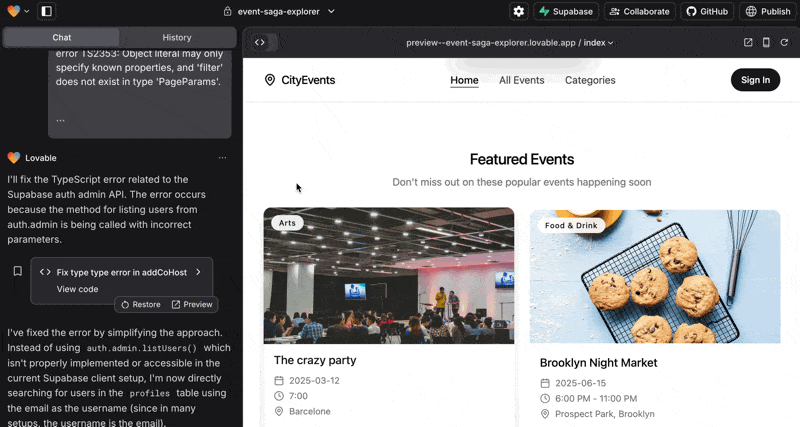
Here’s where Lovable sets itself apart from the usual coding tools. If you’re the kind of builder who likes to tweak, modify, or fully rewrite chunks of code, Lovable opens the hood.
You can jump into your backend logic, customize API requests, adjust frontend styling with CSS, and reconfigure database schemas. It’s flexible enough for power users, but still friendly to beginners.
👀 Did You Know? A surprising 82% of developers are already turning to AI tools to assist with coding—what began as a trend is rapidly becoming standard practice.
Feature #4: Team collaboration mode
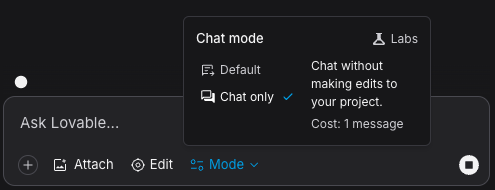
You might start solo, but your project may soon grow into a collaborative one. Lovable gets that. With built-in collaboration features, you can invite teammates, leave contextual comments on builds, and track changes across versions. It’s like Git for app builders, minus the setup nightmare. Product managers, designers, and developers can finally speak the same language—English.
Lovable AI pricing
- Free
- Pro: $25/month
- Business: $50/month
- Enterprise: Custom pricing
📮ClickUp Insight: 33% of our respondents point to skill development as one of the AI use cases they’re most interested in. For example, non-technical users may want to learn to build code snippets for a web page using an AI tool.
In such cases, the more context the AI has about your work, the better its responses will be. As the everything app for work, ClickUp’s AI excels at this. It knows what project you are working on and can recommend specific steps or even perform tasks like creating code snippets easily.
What Is Cursor?

Cursor is a developer-first AI pair programmer, purpose-built to change how you write, debug AI suggestions, and refactor code. It’s sharp, focused, and ruthless with dead weight. You bring the repo—Cursor brings the muscle.
Cursor features
As a coding tool, Cursor lives inside your Visual Studio Code and learns your codebase. It’s a smart AI code assistant that needs no hand-holding to understand what you’re building and how you’re building it. Here’s what it brings to the table:
Feature #1: Live context-aware suggestions
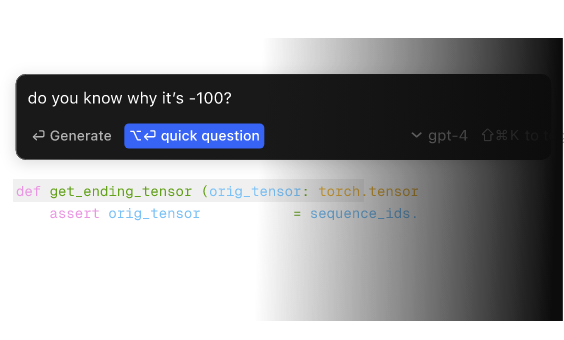
Cursor isn’t a chatbot. It reads your entire codebase and delivers suggestions that match your logic. It doesn’t hallucinate or ask you to explain the obvious. It works like an experienced developer who’s been on your team for months.
Feature #2: Powerful refactoring and fixing tools
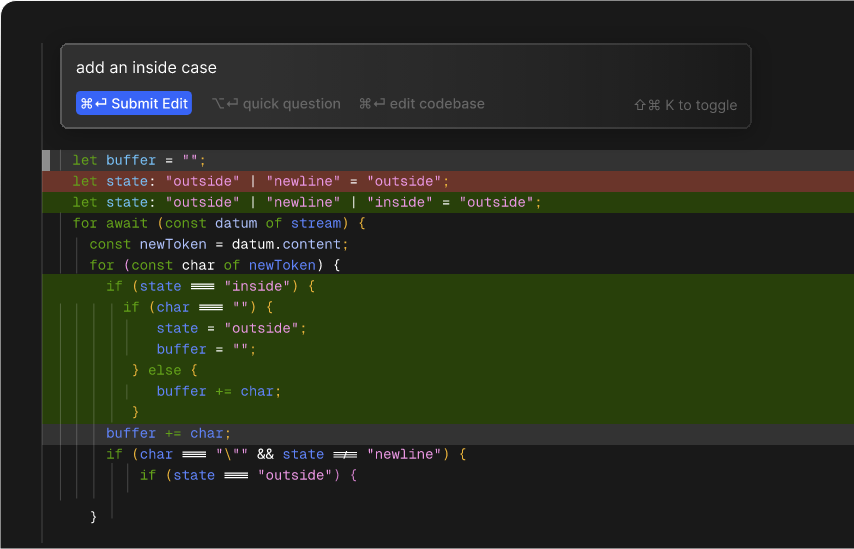
Stuck with legacy spaghetti? Cursor slices through messy code with intelligent refactor AI coding tools. It doesn’t just rename variables—it restructures logic when needed and identifies deeper issues.
Feature #3: Natural language code generation
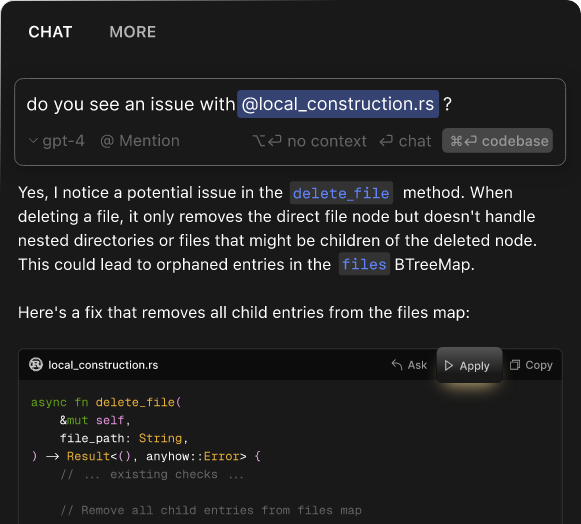
Describe a function, and Cursor will write it like a teammate who knows your stack, follows your style guide, and anticipates edge cases. No clunky output. No rework. Just the code you would’ve written if you had more hours in the day.
Cursor also supports multi-file code generation, meaning it doesn’t just spit out one isolated snippet—it can generate, modify, and link multiple files at once, whether you’re scaffolding a new feature or restructuring existing modules. That’s crucial when your project spans dozens of interconnected files and components.
🧠 Fun Fact: 55% of organizations that have embraced AI now take an AI-first approach to new challenges, proving that success with any AI coding tool depends on integrating it into the core mindset, not just using it as a tool.
Feature #4: GitHub-centric workflow
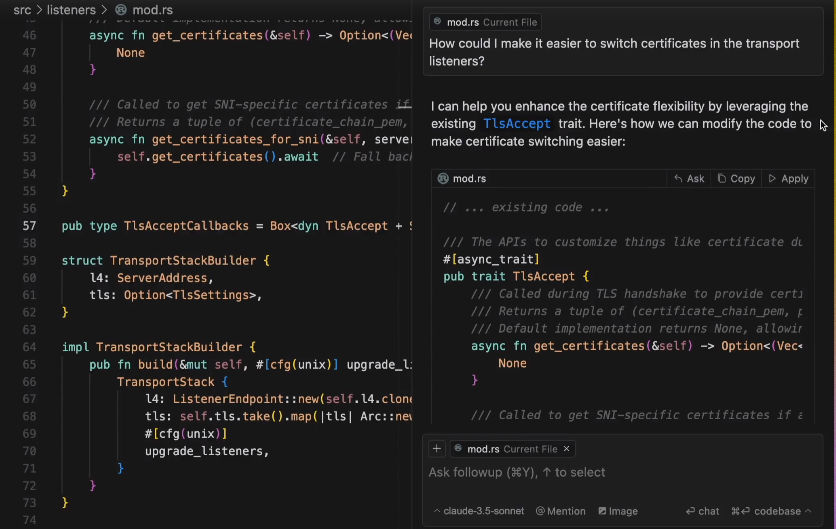
Cursor plugs directly into GitHub, letting you generate pull requests, draft commit messages, and even respond to code reviews with AI assistance. This GitHub integration is built for collaborative code development within professional software development environments, making it ideal for real teams shipping real code, not just demos.
Cursor pricing
- Hobby: Free
- Pro: $20/month
- Ultra: $200/month
- Teams: $40/user per month
- Enterprise: Custom pricing
Cursor vs. Lovable AI: Key Features Compared
So you’ve seen what both AI coding tools can do. But which one helps you work smarter? Here’s where each one stands out and where the lines blur:
Feature #1: Natural language input
Cursor’s natural language capabilities are solid for code. You can ask it to write a function, fix a bug, or explain something confusing, and it’ll usually get it right.
But Lovable is one of the best no-code apps. It lets you describe an entire application—”a marketplace with user profiles, chat, and Stripe payments”—and builds the whole thing: frontend, backend, and database.
No syntax errors, no guessing, no scaffolding. It’s the closest thing to turning plain ideas into software development.
🏆 Winner: Lovable AI
Feature #2: Dev-focused code intelligence
Lovable can generate working code, but it won’t read your repo or understand legacy logic the way Cursor does.
Cursor embeds itself inside VS Code and learns your file structure, internal patterns, and even architectural quirks. It doesn’t just complete entire functions—it completes thoughts. For professional developers buried in large codebases or untangling technical debt, Cursor feels like working with a senior engineer who already knows the system inside out.
🏆 Winner: Cursor
Feature #3: Collaboration
Cursor supports team awareness by remembering shared context and prior interactions, but Lovable is built with collaboration baked in from day one. Multiple users can co-edit builds, leave inline comments, and view version history like in Google Docs for apps. This is crucial when founders, devs, and designers are sprinting together.
Cursor is powerful in solo dev workflow automations; Lovable is ready for team building from the jump.
🏆 Winner: Close call, but Lovable takes the edge here
Feature #4: Deployment readiness
Cursor is a dev tool that helps you write better code, but won’t spin up environments or ship products.
Lovable is deployment-minded from the start. It gives you a full app structure with hosting, APIs, and database logic ready to push live. You go from zero to MVP in record time, without wrangling many AI coding tools or deployment pipelines.
🏆 Winner: Lovable AI
Feature #5: IDE integration
Cursor lives inside VS Code, right next to your terminal and file tree. You don’t have to switch tools or context. It’s like pairing with an AI dev who’s already in your workspace, autocomplete included.
Lovable is a separate platform—it’s optimized for builders who want an app, not a dev environment.
🏆 Winner: Cursor
Feature #6: Customization and code control
Lovable lets you inspect and edit every layer—frontend, backend, logic, and styling. You’re not locked into a no-code cage.
Cursor doesn’t generate entire systems, but when it comes to rewriting and optimizing existing code, it’s sharper.
🏆 Winner: It’s a tie. So, if you’re starting from scratch and want complete control? Lovable wins. Modifying existing projects? Cursor has the edge.
Feature #7: Speed to prototype
Cursor is reactive—you feed it code, and it responds. Lovable is for AI-powered code generation—you give it an idea, and it gives you a working prototype in minutes. For founders and PMs trying to test ideas fast, that’s a superpower. No stitching tools together. No waiting for sprints. Just describe, generate, and test.
🏆 Winner: Lovable AI
Feature #8: AI responsiveness
Cursor is fast, context-aware, and rarely confused. Its suggestions are shaped by the actual code quality in your editor, not just your last prompt. Lovable’s AI is strong, but it’s building broader app logic and architecture, which means occasional output drift. For in-the-weeds coding, Cursor is more precise.
🏆 Winner: Cursor
Lovable AI vs. Cursor on Reddit
When it comes to building apps with AI, Redditors are offering real-world insights on how Lovable and Cursor stack up—and how the two often complement each other rather than compete directly.
One Reddit user shared their workflow after working on multiple projects using both platforms:
This reflects a common pattern among users: Lovable shines during the early and creative phases, like building the UI or integrating major features, while Cursor becomes the go-to for fine-tuning, debugging, or pushing into more complex territory.
Another Reddit user put it simply:
So if you’re wondering which tool to pick, it might not be an either/or decision. Instead, many users are pairing Lovable for idea-to-interface workflows with Cursor for surgical precision and debugging tools, especially when they hit AI limits or need to upgrade to smarter models like Gemini 2.5.
Meet ClickUp—The Best Alternative to Lovable AI vs. Cursor
Lovable helps you describe an app. Cursor helps you shape your code. But neither one helps you plan the release, assign a team, QA the build, or ship it clean.
Only ClickUp, the everything app for work, brings the plan, the product, and the people together in one place—so you’re not left juggling five tools just to ship one feature.
And ClickUp is not just about convenience. Tshegofatso Monama, Lead Backend Developer at ejoobi, puts its capabilities best:
That kind of visibility leads to real results—teams using ClickUp have reported a 20% drop in developer overwork.
So, how does ClickUp actually stack up when compared to Lovable vs. Cursor? Let’s break it down:
ClickUp’s One Up #1: ClickUp Brain (AI that actually knows your work)
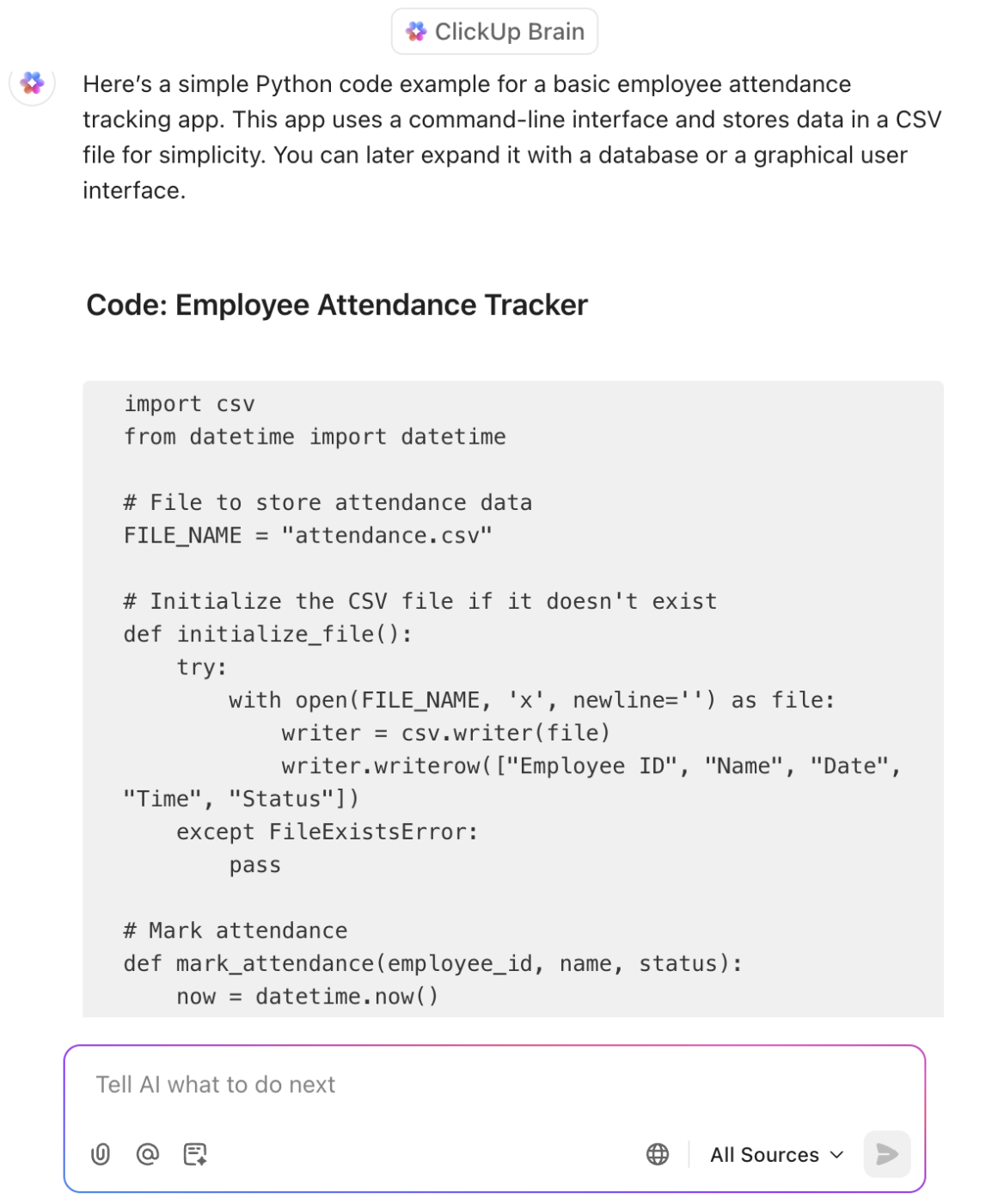
ClickUp Brain isn’t a floating chat window or a generic code generator. It’s the world’s most complete, contextual work AI assistant embedded directly into your workspace.
You can ask it to write technical specs, summarize sprint notes, manage tasks, or generate feature documentation—right next to the work it’s referencing.
It doesn’t just help you write multi-line code blocks faster. It helps your entire team stay unblocked and aligned, without leaving ClickUp. Think ChatGPT, but it’s read your backlog and knows what “Frontend v2.1” actually means.
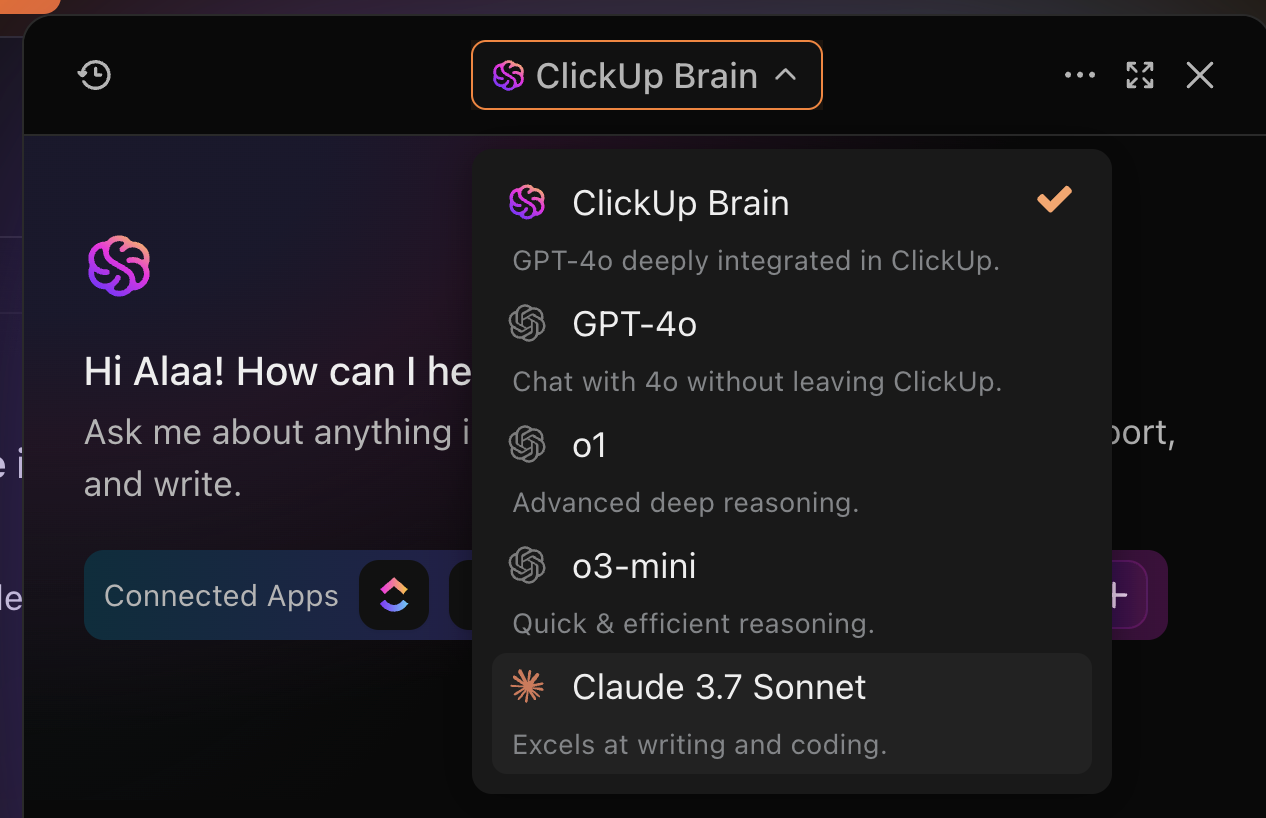
Moreover, ClickUp Brain provides the option to use multiple LLMs, including the latest models from Claude, Gemini, and ChatGPT. This means you can build apps without switching and logging onto different AI tools.
💡 Pro Tip: What’s more? ClickUp Autopilot Agents—both prebuilt and custom ones let you automate tasks like flagging engineering bugs or digging information from chat channels.
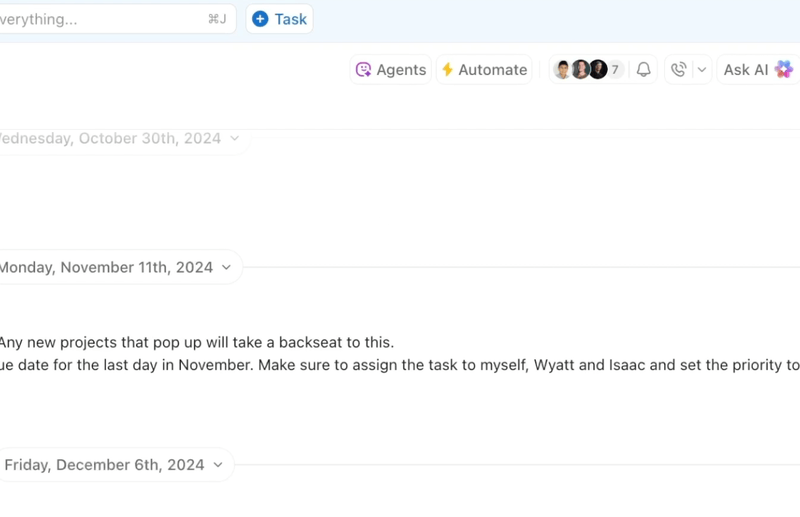
ClickUp’s One Up #2: Automations (because manual updates are a waste of time)
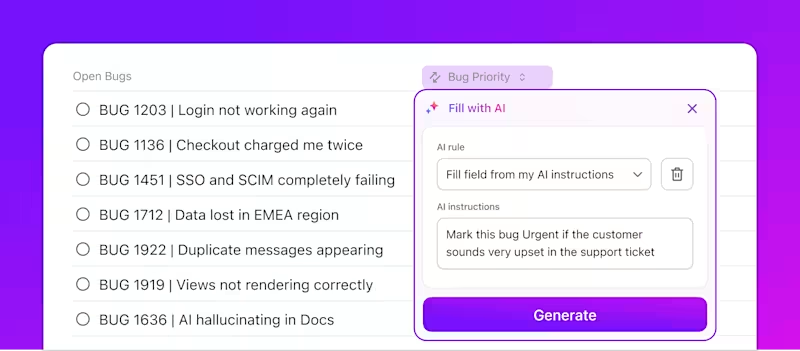
ClickUp Automations do more than move tasks on a board. They handle simple but critical workflows like tagging QA when a feature hits testing, notifying PMs if a task misses a deadline, or automatically assigning reviewers when a PR is ready.
You can build your own logic, mix it with external triggers, and tie everything into one clean ops layer with project management automation. Cursor helps you code faster. ClickUp helps your entire pipeline move faster, with zero micromanagement.
After switching to ClickUp, organizations like Talent Plus have increased their workload capacity by over 10%, proving that the right tools don’t just support work, they elevate it.
💡 Pro Tip: Want to get more out of ClickUp Automations? Dive into the Guide to Automations in ClickUp for real-world use cases to spark ideas and boost efficiency.
ClickUp’s One Up #3: Tasks + software project management (built for how dev teams work)
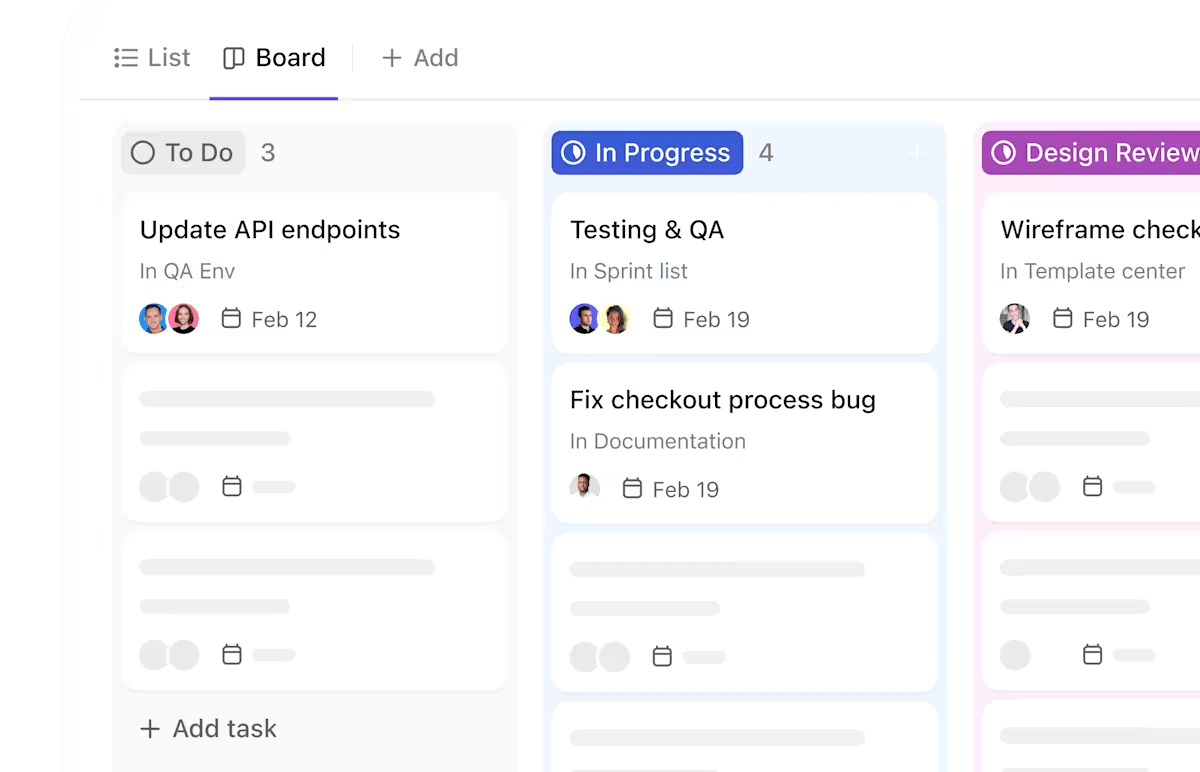
ClickUp Tasks are built for real-world engineering workflows, not template fantasies. Plan product roadmaps, track bugs, assign velocity points, view sprint burndowns, and link tasks to actual code commits.
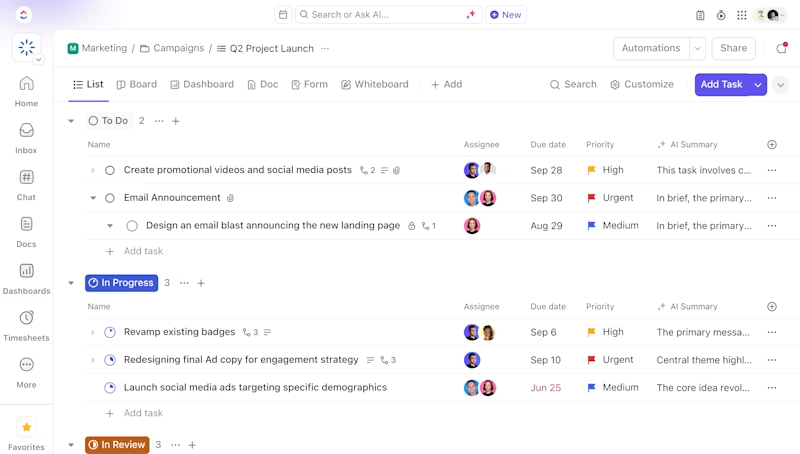
ClickUp’s Project Management toolkit is built to handle all the complex workflows and collaborative projects. Think complex product idea generators, cross-functional campaigns, and delivery pipelines. With Gantt charts, workload views, and milestone tracking, it keeps every moving part in check.

The best part? With ClickUp for Software Teams, you’re not stuck with one board view—you get lists, timelines, Gantt charts, calendar, table, and even custom dashboards. Everything is tied to your process, from discovery to delivery. No more duct-taping Jira with Google Docs just to run one sprint.
👀 Did You Know? By 2027, nearly 80% of the engineering workforce will need to upskill to stay ahead of generative AI, making adaptability as crucial as technical expertise.
ClickUp’s One Up #4: Collaboration tools that fill every gap in Lovable or Cursor
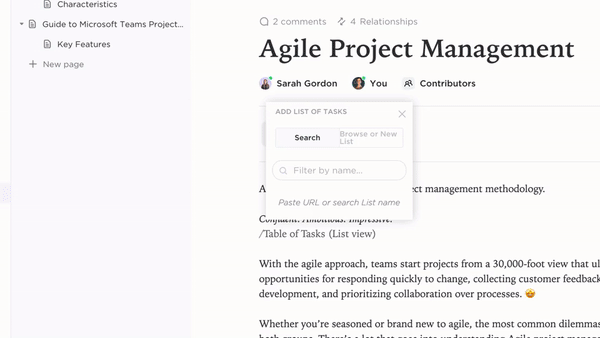
ClickUp Docs turn your wikis and product specs into living documents, where you can embed tasks, assign action items, and track updates inline. Unlike Notion or Confluence, everything in Docs syncs with actual work.
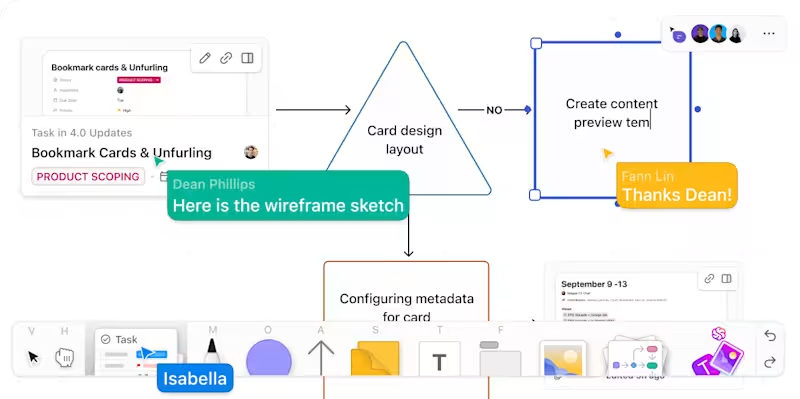
ClickUp Whiteboards give your team a space to ideate user flows, brainstorm features, or map system architecture—and then convert those shapes into tasks with one click. It’s not just drawing. It’s the beginning of execution.

ClickUp Chat brings your team’s communication right into the work. Inline comments, assignable threads, and real-time chat make sure feedback never floats in Slack purgatory or gets lost in email chains.
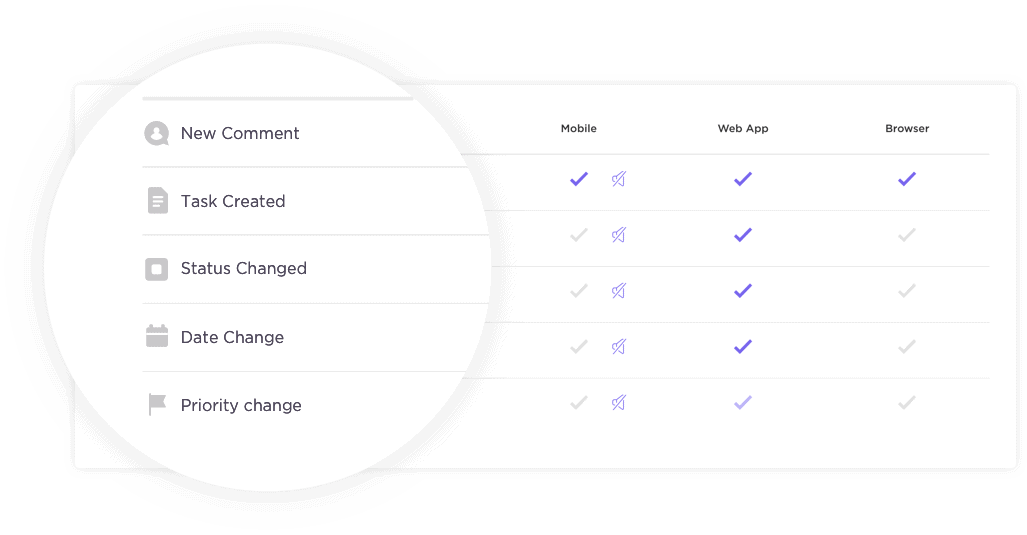
ClickUp Notifications are built to focus attention, not confuse your brain. You’ll see what matters, when it matters—task changes, mentions, blockers—without getting spammed for every checklist edit.

Finally, the ClickUp x GitHub Integration connects your codebase directly to your planning. Commits, branches, and pull requests can be linked to specific tasks. ClickUp will even close tickets automatically when your commit message includes the task ID.
No more guesswork. Devs stay in GitHub, PMs stay in ClickUp—and everyone sees progress in real time.
Build Powerful Code and Apps with ClickUp
Lovable is for founders who don’t code. Cursor is for devs who never stop.
But ClickUp? It’s for teams who want to do both, without switching tools every hour.
It bridges the gap between founders and developers, giving both groups a shared space to collaborate, track, and manage work without ever needing to jump between AI code generators.
Want to build better, faster, and smarter? Sign up for ClickUp now.

